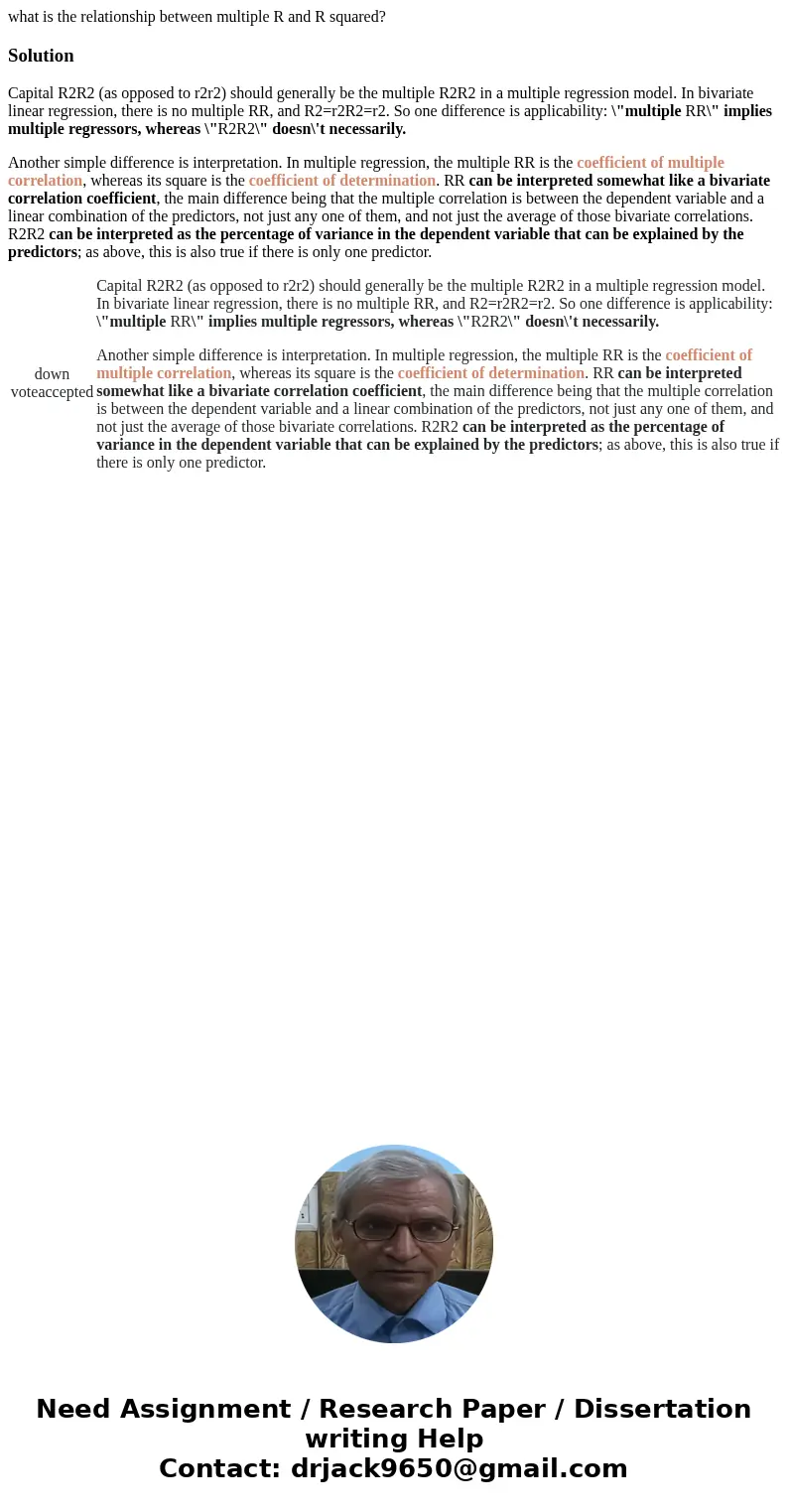what is the relationship between multiple R and R squared?
Capital R2R2 (as opposed to r2r2) should generally be the multiple R2R2 in a multiple regression model. In bivariate linear regression, there is no multiple RR, and R2=r2R2=r2. So one difference is applicability: \"multiple RR\" implies multiple regressors, whereas \"R2R2\" doesn\'t necessarily.
Another simple difference is interpretation. In multiple regression, the multiple RR is the coefficient of multiple correlation, whereas its square is the coefficient of determination. RR can be interpreted somewhat like a bivariate correlation coefficient, the main difference being that the multiple correlation is between the dependent variable and a linear combination of the predictors, not just any one of them, and not just the average of those bivariate correlations. R2R2 can be interpreted as the percentage of variance in the dependent variable that can be explained by the predictors; as above, this is also true if there is only one predictor.
| | Capital R2R2 (as opposed to r2r2) should generally be the multiple R2R2 in a multiple regression model. In bivariate linear regression, there is no multiple RR, and R2=r2R2=r2. So one difference is applicability: \"multiple RR\" implies multiple regressors, whereas \"R2R2\" doesn\'t necessarily. Another simple difference is interpretation. In multiple regression, the multiple RR is the coefficient of multiple correlation, whereas its square is the coefficient of determination. RR can be interpreted somewhat like a bivariate correlation coefficient, the main difference being that the multiple correlation is between the dependent variable and a linear combination of the predictors, not just any one of them, and not just the average of those bivariate correlations. R2R2 can be interpreted as the percentage of variance in the dependent variable that can be explained by the predictors; as above, this is also true if there is only one predictor. |
 Homework Sourse
Homework Sourse
